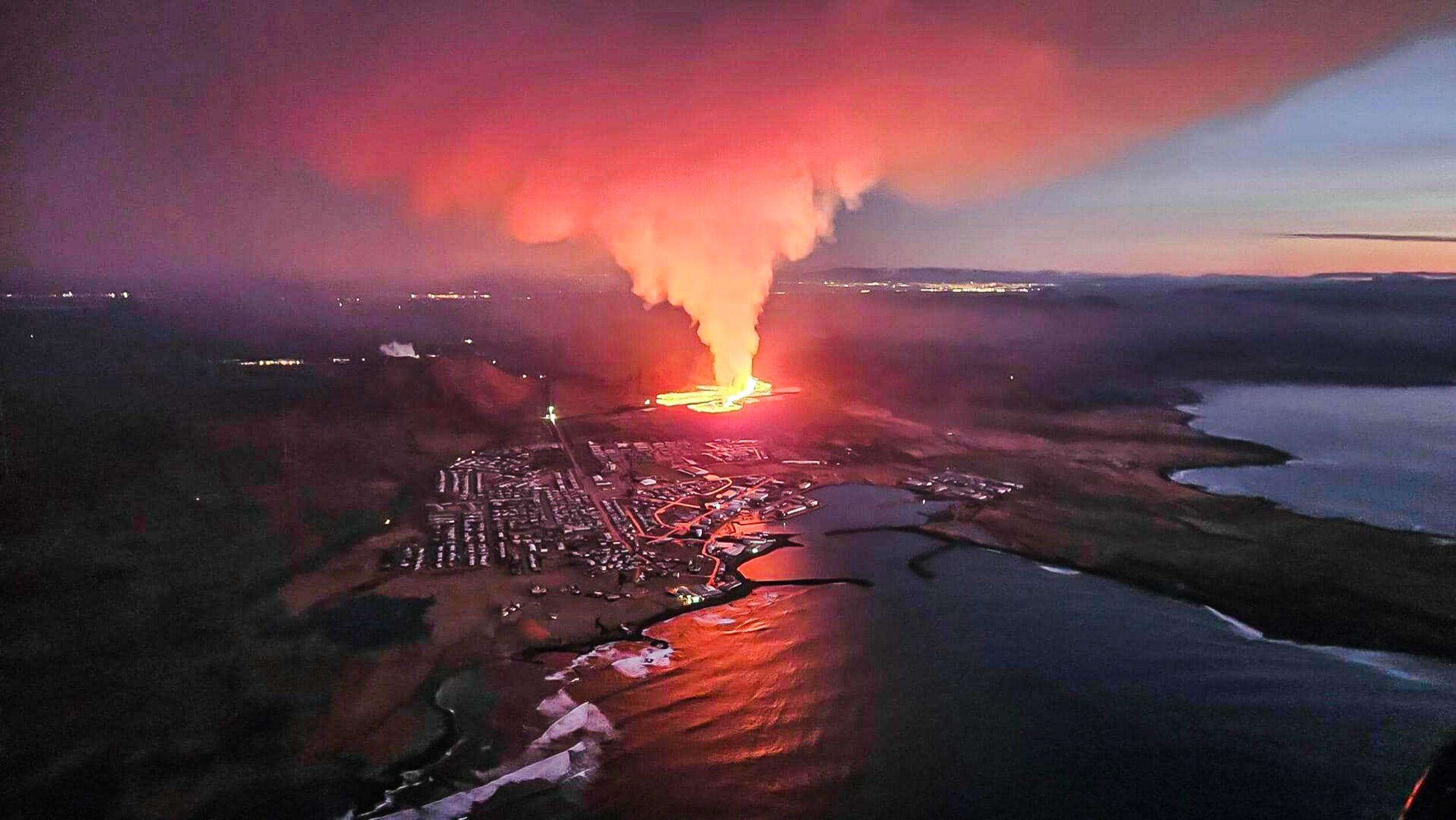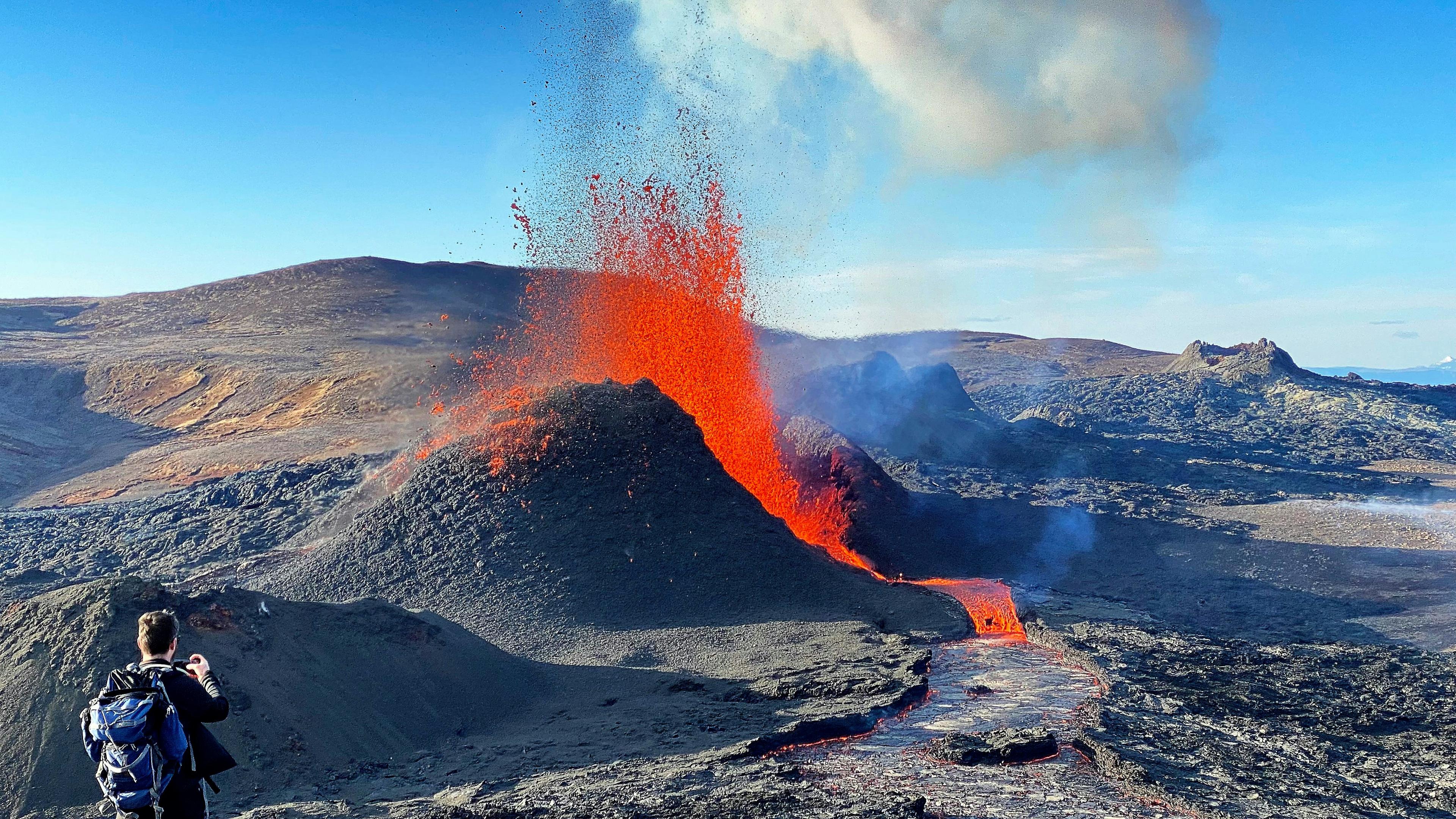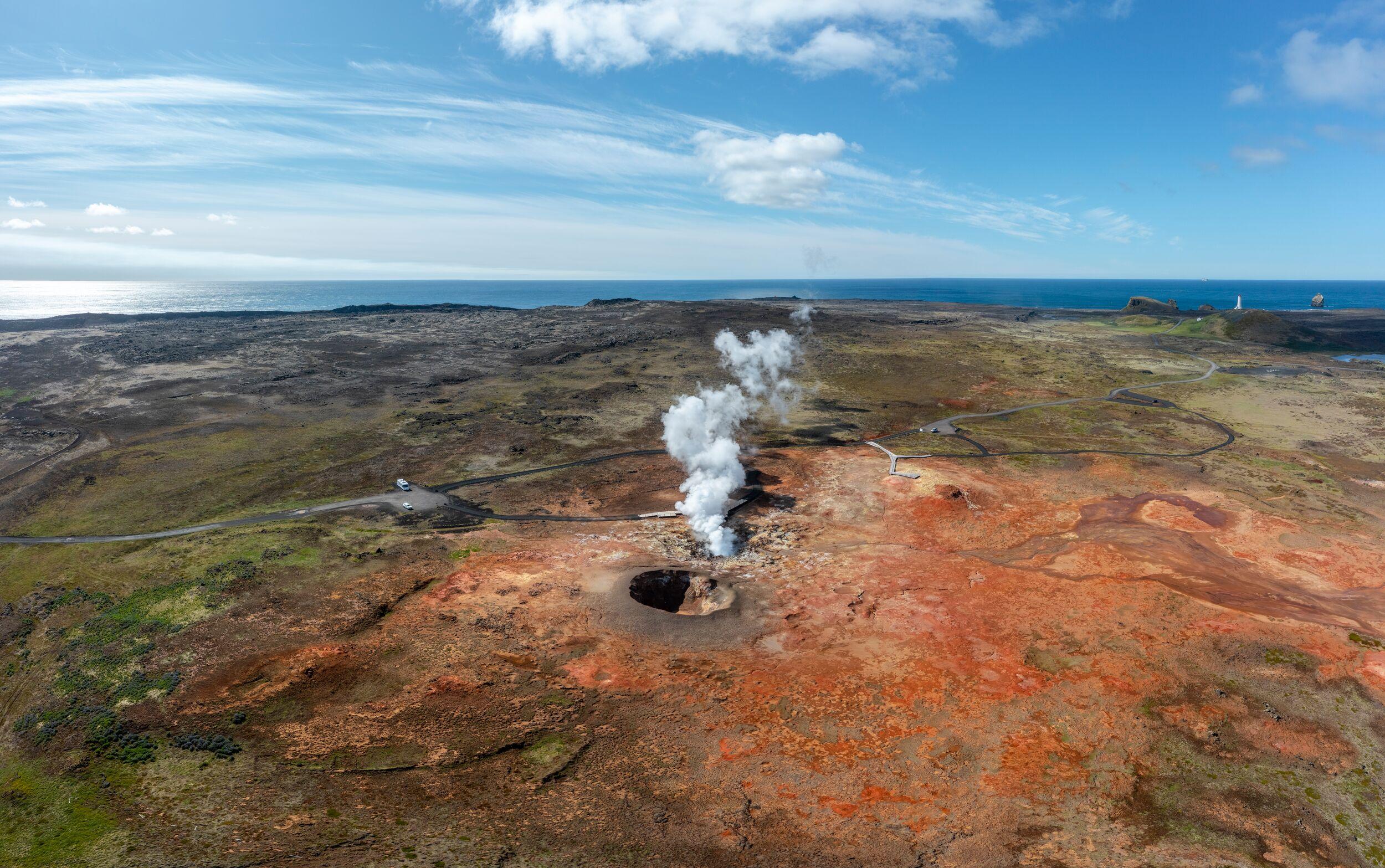Grindavík: A Town Forged by Fire
As one of the few towns in the Reykjanes Geopark, a UNESCO Global Geopark, Grindavík is a gateway to some of Iceland’s most dramatic natural wonders. Visitors passing through this coastal community find themselves drawn to the geothermal landscapes that surround it, from the world-famous Blue Lagoon to the ominous, dark silhouettes of volcanic craters that dot the horizon. But while the beauty of the landscape draws visitors, the underlying story of Grindavík’s people—their resilience in the face of natural upheaval—is what truly leaves visitors in awe.
Grindavík's History
First settled around 934 by Viking explorers, the town developed as one of the few harbours along Iceland's rugged southwestern coast, making it a vital fishing hub for centuries. Despite the dangers posed by the wild North Atlantic seas, fishing remained the backbone of Grindavík’s survival.
Over the centuries, the town endured numerous challenges—from fierce disputes between foreign fishermen in the 16th century to the infamous pirate raids of 1627. Yet, through it all, Grindavík persisted.
By the mid-20th century, the town’s fortunes improved dramatically with the introduction of safer fishing methods and modern infrastructure. As the fishing industry flourished, Grindavík’s identity as a resilient, sea-bound community strengthened. In 1974, it was officially declared a municipality, marking a new chapter of stability and growth.
The region was free of volcanic eruptions for over 800 years. The volcanic forces beneath Grindavík and its surroundings, which powered the nearby power plant and the famous Blue Lagoon just five kilometres away, remained dormant throughout this period. This allowed the town to flourish, and thanks to its proximity to Keflavík International Airport, Grindavík began attracting more visitors, spurring steady population growth as tourism boomed.
Volcanic Awakening
But the calm was not to last. In March 2021, a series of unusually strong earthquakes shook the town, disturbing the peace that had endured for centuries. While residents were no strangers to minor tremors, these quakes were much stronger than anything they were used to. Everyone sensed that something significant was about to happen.
After months of tremors, the Fagradalsfjall volcanic system erupted, marking the first major volcanic activity in the region in nearly a thousand years. Scientists declared this as the beginning of a new chapter, with all signs pointing to a prolonged period of volcanic unrest.
The characteristics of the region, combined with accumulated data, suggested that this eruption would not end quickly. Experts warned that the volcanic activity could continue for months, years, or even decades, signalling a dramatic shift in the landscape’s stability and a new era of uncertainty for the area.
They were right: the earth’s rumblings didn’t stop. By the end of 2023, Grindavík experienced a series of volcanic events with only brief pauses between them. Lava flows and seismic activity have become part of daily life. The town was evacuated several times as the threat of eruptions grew, putting the resilience of its residents to the test once again.
While the geothermal power beneath the surface was well-known, no one knew when the magma deep below would finally awaken.
Yet, despite the danger, many locals showed excitement rather than fear. Some joked about having a volcanic eruption in their own backyard, finding humour in the fact that they were witnessing such a rare and powerful event up close. For them, the eruptions were far enough away to not be life-threatening, allowing them to marvel at nature’s spectacle rather than be afraid of it.
The eruptions of 2021 and 2022 had already drawn curious locals and international visitors alike, eager to see the lava fields and experience the volcanic landscape firsthand. As soon as travel restrictions were lifted after the COVID-19 pandemic, the volcanic activity became a major draw for tourists, adding a new dimension to Grindavík’s appeal. The town found itself in the global spotlight, with visitors flocking to see the eruptions up close, hiking to the lava fields, and experiencing the raw energy of Iceland’s volcanic heart.
Hazard Zone
Of course, not everyone in Grindavík was so calm. For many, the threat was too real to ignore, and they chose to leave as soon as the first eruptions hit. And they were right.
In late 2023, Grindavík faced a threat that seemed to target the town itself. Unlike the relatively distant eruptions of 2021 and 2022, which took place kilometres away in uninhabited valleys, this time, the threat struck much closer to home. Magma was accumulating directly underneath the town, home to nearly 4,000 residents.
The Icelandic Meteorological Office recorded an alarming increase in earthquakes and ground changes, including the formation of deep rifts in the earth. One such rift tragically claimed the life of a local worker who was on shift operating construction machinery in an attempt to fill it. The situation became more dire as these rifts opened up across the town, prompting evacuation out of fear that an eruption could occur directly beneath Grindavík.
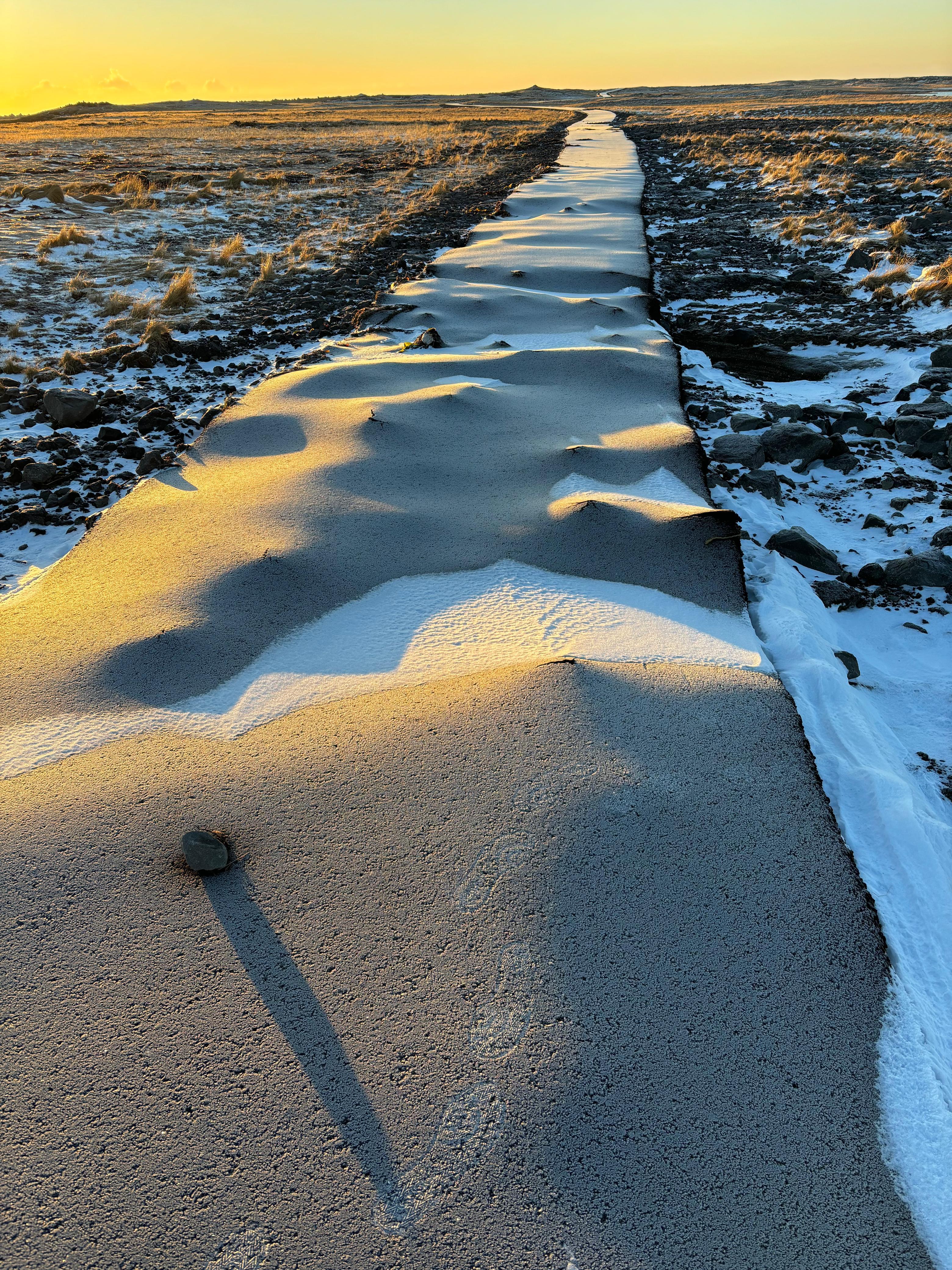
Our colleague Candyce, a proud former resident of Grindavík, took this picture of a pathway she used to walk regularly. Once flat and solid concrete, it is now tilted and bumpy, as if it were made of soft clay.
Cracks split streets in Grindavík
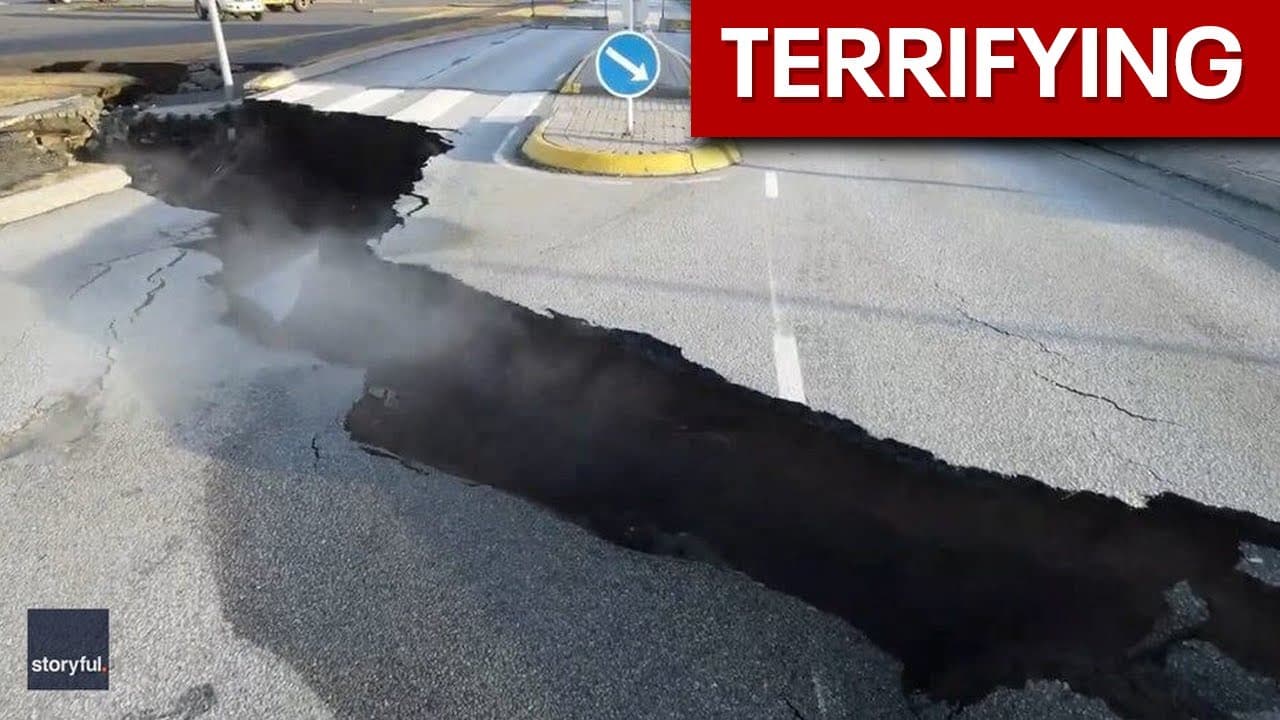
Grindavík Houses Engulfed by Lava
The next volcanic fissure eruption occurred three kilometres northeast of Grindavík. Fortunately, it was short-lived, and the town remained unharmed. However, shortly after, another fissure opened just a few hundred meters from the town. Lava flows moved quickly, engulfing three residential houses. Thanks to the earlier evacuation, the homes were empty, and no lives were lost. The lava halted before it could cause further damage, but the close call shook the community.
The volcanic activity continued. In the months that followed, new fissures opened, with lava flows threatening the town and cutting off roads. Each time, the eruptions were met with swift evacuation efforts. Although the eruptions often ended within days or weeks, the danger was real and ever-present.
The town’s infrastructure suffered, with roads cracked, walls damaged, and hidden fissures forming beneath the ground. Lava flows from multiple eruptions consumed more land and infrastructure, creating a surreal landscape of destruction and resilience.
Lava engulfing residental houses
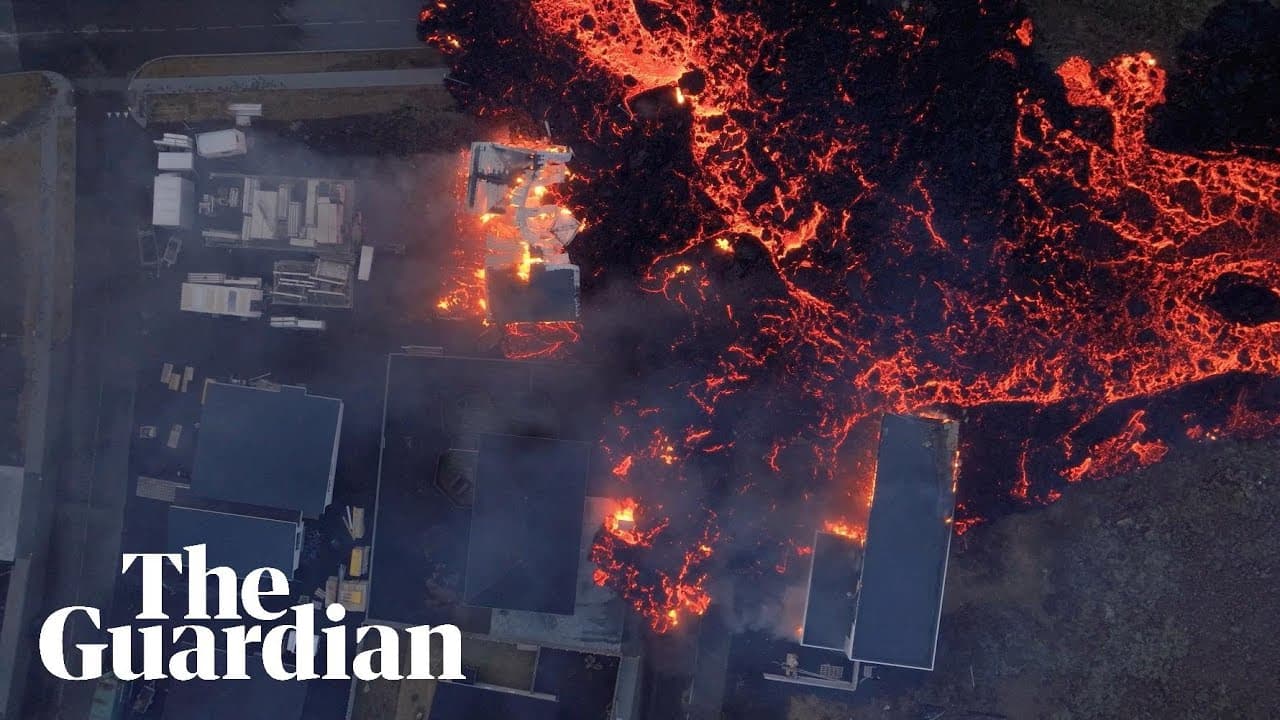
Residents were forced to seek new homes permanently, as the dangers beneath Grindavík made it unsafe to remain. The Icelandic government offered financial support to help affected families relocate and buy homes that had become uninhabitable.
While this provided some relief, the reality for most locals was far from easy. The emotional toll was significant. Parents worried about their children’s future, families felt the strain of being uprooted, and the stress of rebuilding their lives weighed heavily on everyone.
With homes becoming uninhabitable and schools, kindergartens, and workplaces closed, residents were scattered across the country seeking refuge. Families spent months in temporary housing, children lost their friends, and access to education, and many struggled to find new homes, schools, and jobs. The upheaval brought deep anxiety as they left behind not only their homes but also their sense of security and normalcy.
Despite these hardships, the spirit of solidarity within the community remained strong. Locals supported one another, ensuring that no one was left without shelter or resources. The government’s support highlighted Icelanders' resilience and commitment to helping each other through tough times.
Grindavík has become a local symbol of perseverance, standing strong against the forces of the earth. The residents have even earned the nickname "GrindaVíkings", showing the world what it means to endure, adapt, and thrive in the face of nature’s power.
Grindavík Reopens to Visitors Briefly and Closes Again
After the tremors subsided and the lava cooled, Grindavík began the careful process of reopening its doors to the outside world. However, the reopening lasted only two weeks, allowing a few lucky visitors to explore the town on guided tours before the next eruption occurred at the end of November, leading to the area's closure once again.
It is expected that the town will continue to experience cycles of reopening and closure as volcanic activity persists. While locals are not allowed to move back permanently, many are considering starting or continuing businesses, commuting daily from Reykjavík or other nearby towns to welcome visitors whenever the town is open.
For those eager to experience Iceland’s volcanic landscapes, Reykjavík Excursions offers guided day tours through the Reykjanes Geopark, taking visitors to the very edge of the country’s volcanic heart.
It is expected that the town will continue to experience cycles of reopening and closure as volcanic activity persists.
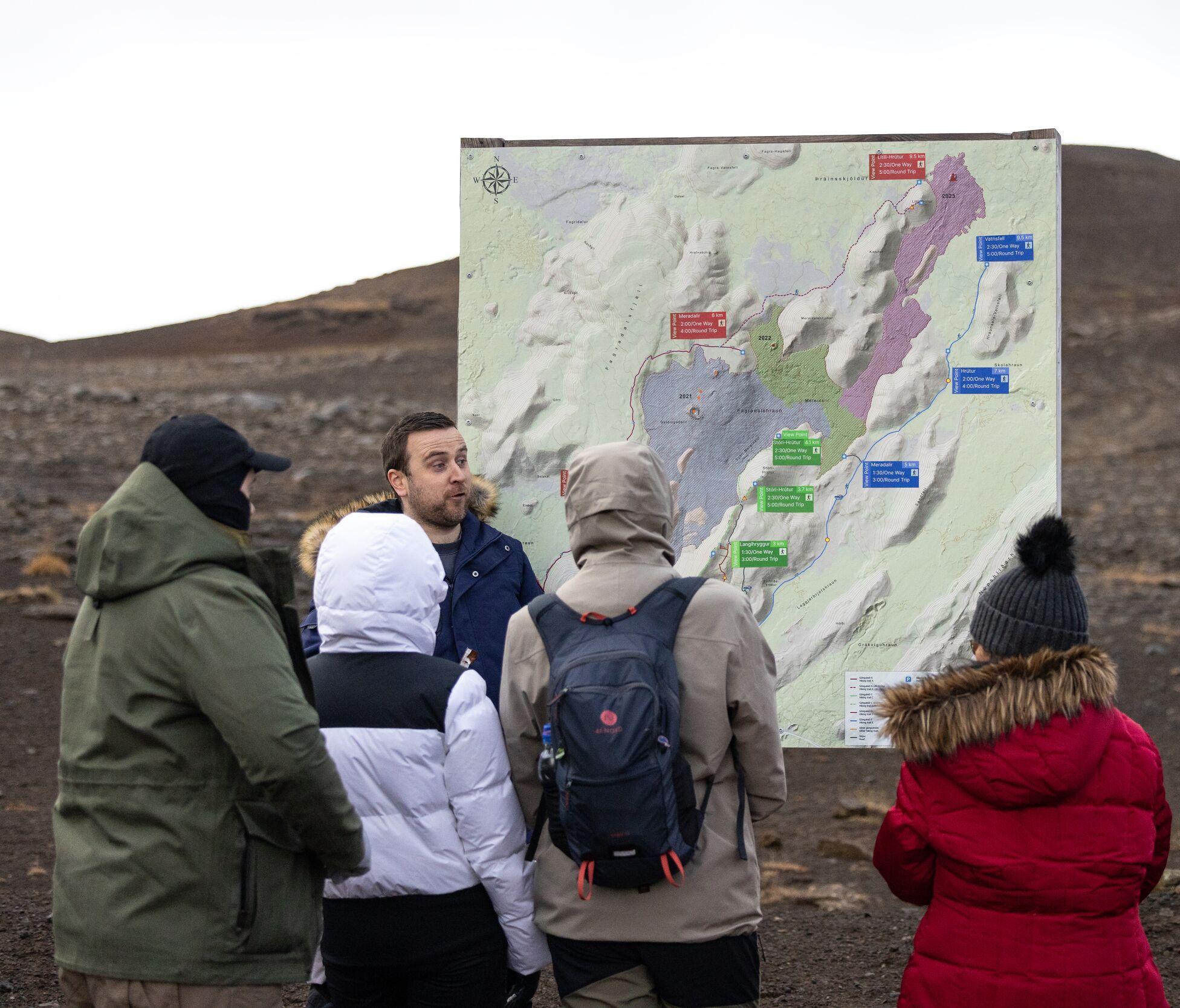
This tour provides insight into the geological forces that shape the region and offers the unforgettable experience of hiking to a newly formed lava field still steaming from recent eruptions.
The tour takes visitors through the otherworldly landscapes of the Reykjanes Geopark and is operated in accordance with current volcanic activity and advice from authorities.
Whenever the area is accessible, the tour includes a guided hike to the fresh lava field as one of its highlights. Visitors can feel the heat rising from the still-warm ground as they approach the edge of the lava field—a powerful, tangible reminder of the forces at work beneath the surface.
When the town of Grindavík is open, the tour includes a stop there with a short guided walk to witness the aftermath of the earthquakes and eruptions. Knowledgeable tour guides, many with deep ties to the area, safely navigate visitors through the rugged terrain while sharing stories of Grindavík’s history and the remarkable resilience of its people.
If the area is closed, the tour is either canceled with a full refund or rerouted to other scenic volcanic landscapes and culturally significant sites. The Reykjanes Peninsula has been a UNESCO Global Geopark since 2015, long before the Fagradalsfjall eruptions began, and it offers so much more to explore than just the newest lava fields.
The tour is operated in accordance with current volcanic activity and advice from authorities.
Future of Grindavík: Awaiting a Return to Stability
The future of Grindavík remains uncertain. At this point, it stands as a “ghost town,” with no permanent residents, a haunting reminder of nature’s power and unpredictability. No one knows what comes next, but visiting Grindavík now offers a once-in-a-lifetime opportunity that may never come again.
Looking to Iceland’s past, however, there is reason for hope. In 1973, the town of Heimaey in the Westman Islands faced a devastating volcanic eruption that forced its residents to evacuate. Homes were buried under lava, and the community’s future seemed lost. But in the years that followed, Heimaey was rebuilt, and today, it thrives as a vibrant town with a growing population and a popular destination for visitors.
Many hope Grindavík’s story will follow a similar path, once again providing a home for its resilient community. Perhaps in the years to come, the town will transform from a place of disruption to a destination of renewal, where visitors can witness the effects of nature’s power and experience the strength and perseverance of a community that refuses to be defeated.
Until then, Grindavík remains in a state of transition, its future unwritten, its resilience unbroken, and its story still unfolding.
Tours to Grindavík

Volcanic Wonders with Grindavik Visit
Once a bustling fishing village, Grindavík now serves as a stark reminder of nature’s relentless power. After a recent volcanic eruption forced the evacuation of its residents, much of the town remains uninhabitable, its landscape forever marked by the destructive forces of the earth.
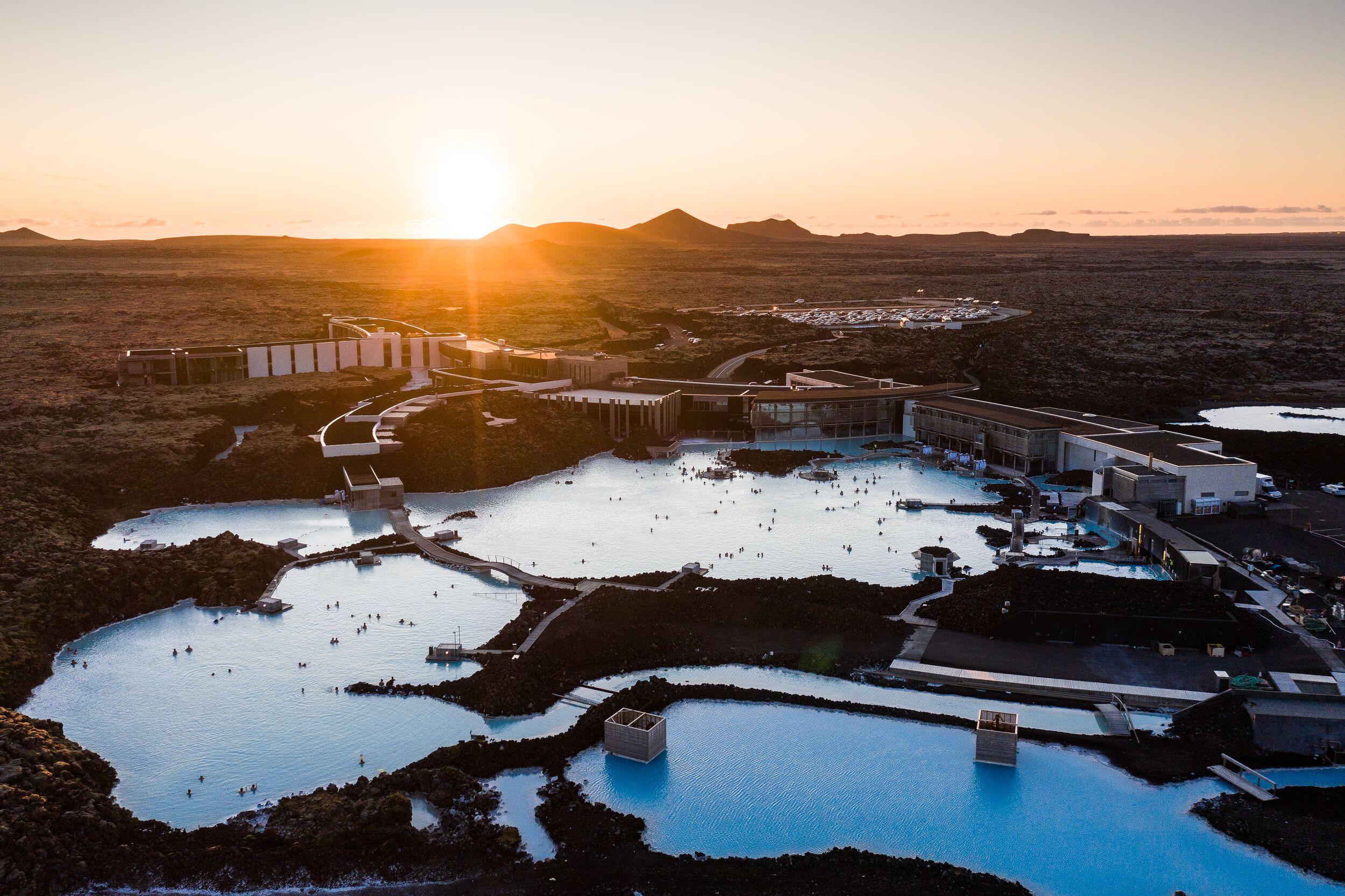
Volcanic Wonders with Grindavik Visit & the Blue Lagoon
Embark on a carbon-neutral journey through Iceland’s stunning volcanic landscapes. Enjoy a refreshing hike across a lava field, formed by recent eruptions, and then unwind with a soothing soak in the healing geothermal waters. This perfect combination of adventure and relaxation offers an unforgettable way to experience the raw power and serene beauty of Iceland’s natural wonders.
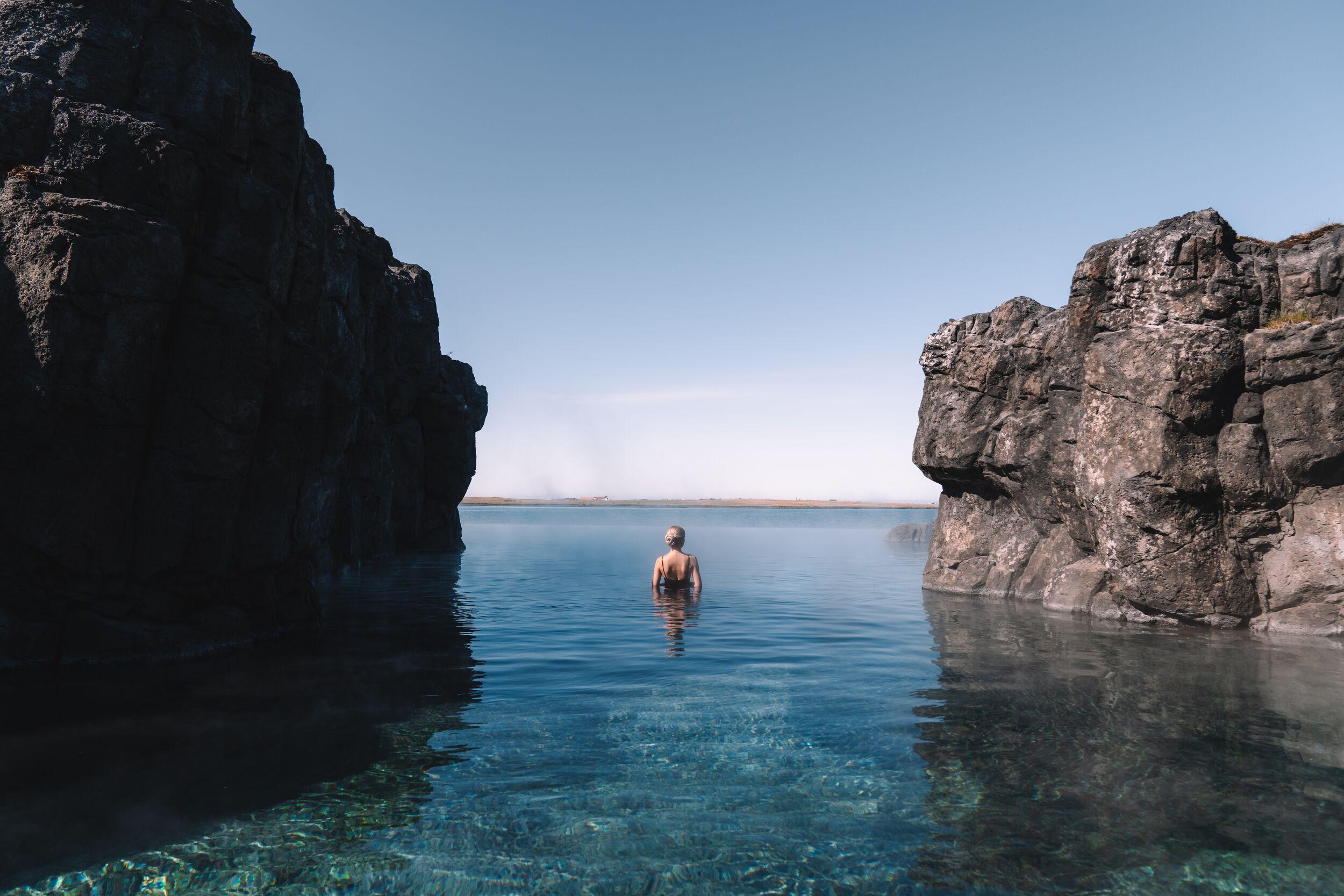
Volcanic Wonders with Grindavík Visit & the Sky Lagoon
Discover Iceland’s geothermal heart in the UNESCO-recognized Reykjanes Geopark, where continents meet and drift apart. Explore a vibrant geothermal area, hike to freshly-formed lava fields, and visit the resilient fishing village of Grindavík. This carbon-neutral journey ends with pure relaxation at Reykjavík’s Sky Lagoon, where you can soak in warm waters and unwind with a luxurious spa ritual.
Articles we recommend
See all articlesRecommended tours

Volcanic Wonders with Grindavik Visit
Once a bustling fishing village, Grindavík now serves as a stark reminder of nature’s relentless power. After a recent volcanic eruption forced the evacuation of its residents, much of the town remains uninhabitable, its landscape forever marked by the destructive forces of the earth.

Volcanic Wonders with Grindavík Visit & the Sky Lagoon
Discover Iceland’s geothermal heart in the UNESCO-recognized Reykjanes Geopark, where continents meet and drift apart. Explore a vibrant geothermal area, hike to freshly-formed lava fields, and visit the resilient fishing village of Grindavík. This carbon-neutral journey ends with pure relaxation at Reykjavík’s Sky Lagoon, where you can soak in warm waters and unwind with a luxurious spa ritual.
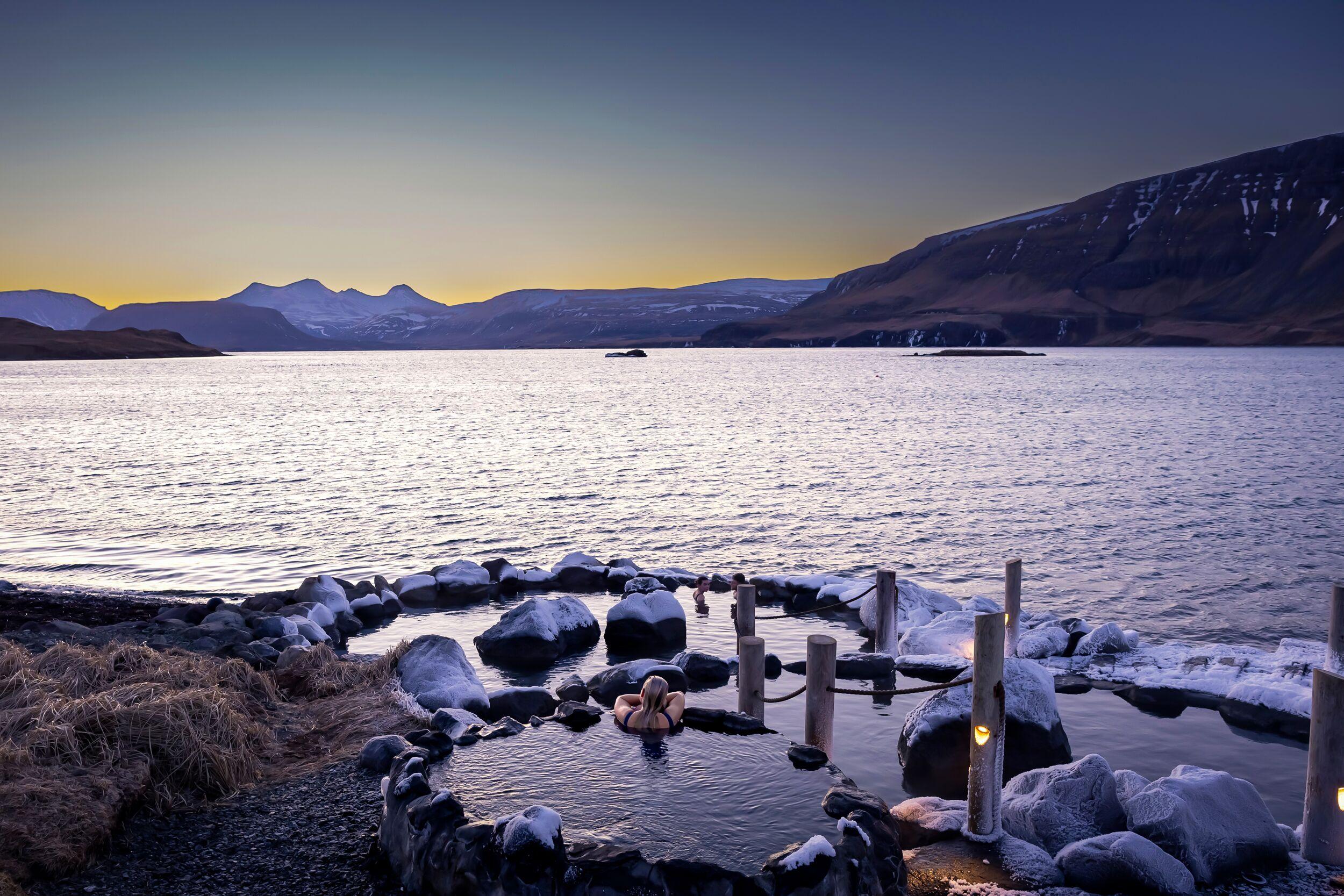
Volcanic Wonders with Grindavik Visit & the Hvammsvík Hot spring
Discover Iceland’s geothermal wonders in the UNESCO-recognized Reykjanes Geopark, a dramatic landscape where continents drift apart. This carbon-neutral journey takes you through vibrant geothermal fields, new lava fields, and the village of Grindavík, before concluding with a serene soak at Hvammsvík Hot Springs.
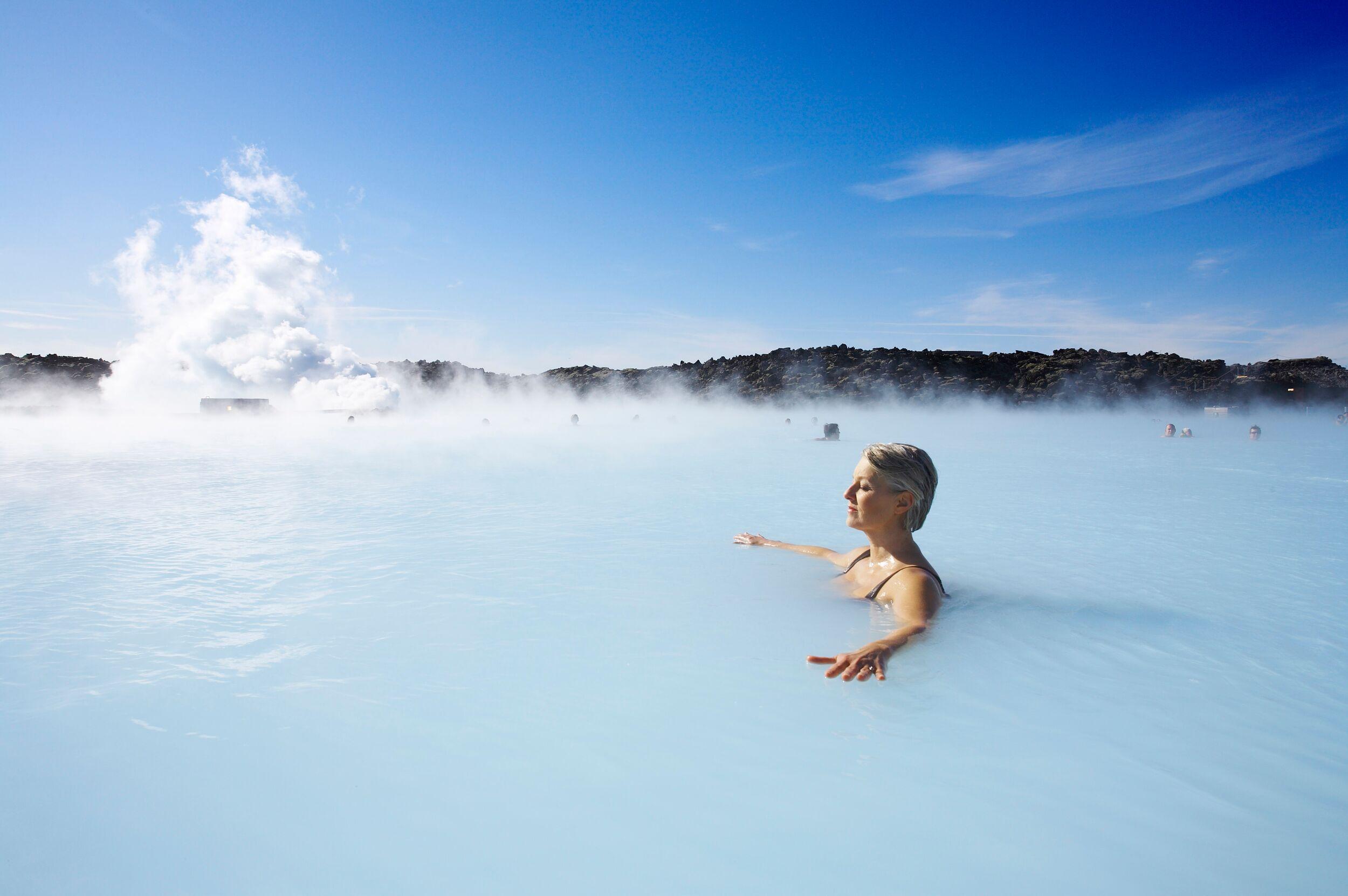
- Best seller
- Popular
Blue Lagoon & Northern Lights
Enjoy a perfect winter day in Iceland! Experience the best of Iceland with this package of two of the island’s most popular tours in one day! Soak in the milky blue healing water of the Blue Lagoon, which is one of Iceland's most famous tourist attractions and is considered by many to be a once-in-a-lifetime experience and an unmissable part of a visit to Iceland. After your return to Reykjavík, a guide will lead you on a search for the elusive northern lights! Watching the lights dance and flicker in the sky, changing shape and colour, is incredible. Prepare to be dazzled!
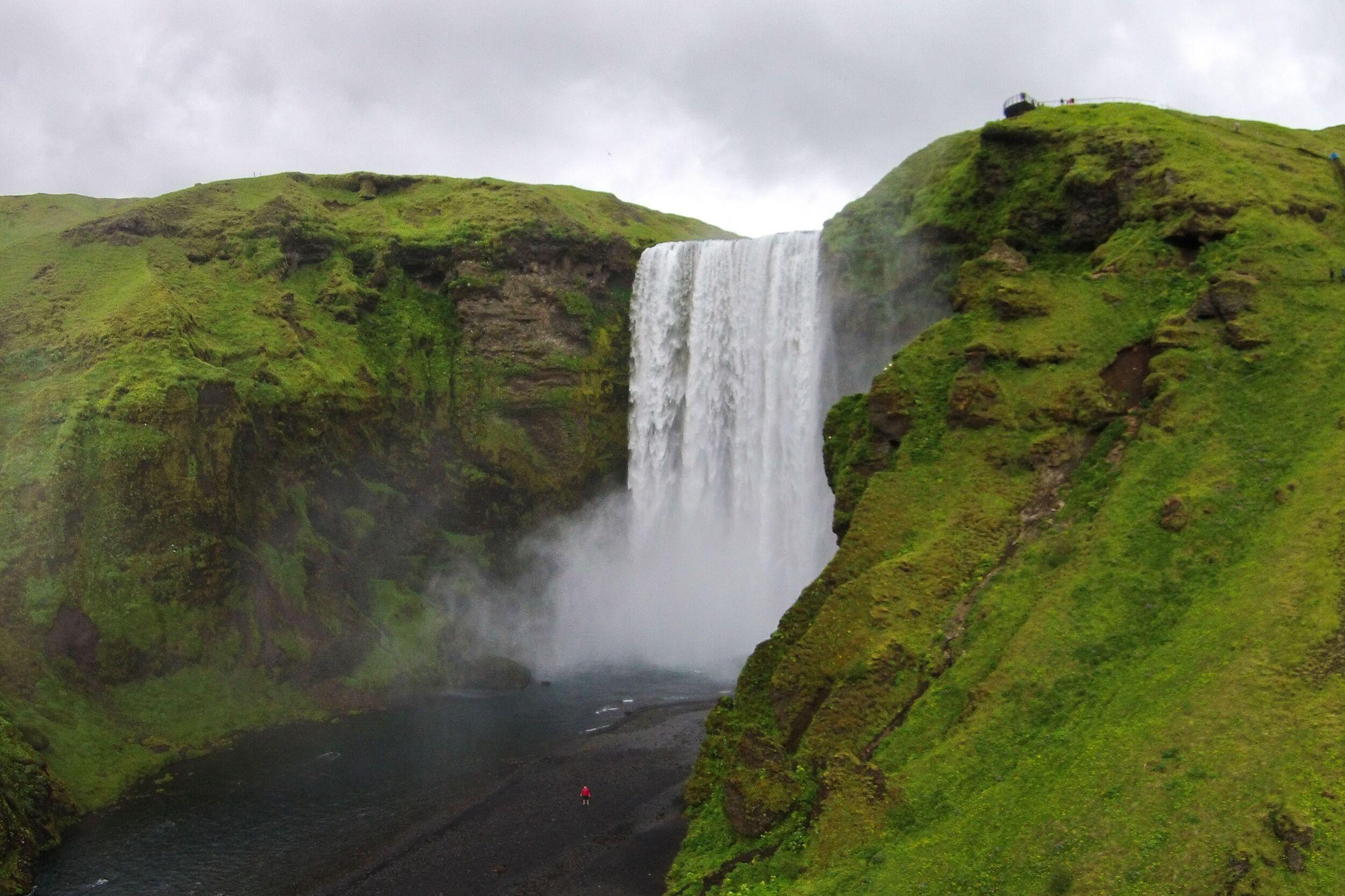
Highland Bus - Reykjavík to Skógar
In the summer, Skógar comes alive, turning into a lush green wonderland under the towering Eyjafjöll mountains. The area is home to one of Iceland’s most famous waterfalls, Skógafoss, a pearl of the south coast. The drive to Skógar is a scenic ride through the picturesque south of Iceland, passing by small farms and charming villages with astounding views of the surrounding mountains and volcanoes on clear days. Whether you are planning a day trip to the region or a multi-day hike, leave the driving to us!

Volcanic Wonders with Grindavik Visit & the Blue Lagoon
Embark on a carbon-neutral journey through Iceland’s stunning volcanic landscapes. Enjoy a refreshing hike across a lava field, formed by recent eruptions, and then unwind with a soothing soak in the healing geothermal waters. This perfect combination of adventure and relaxation offers an unforgettable way to experience the raw power and serene beauty of Iceland’s natural wonders.


